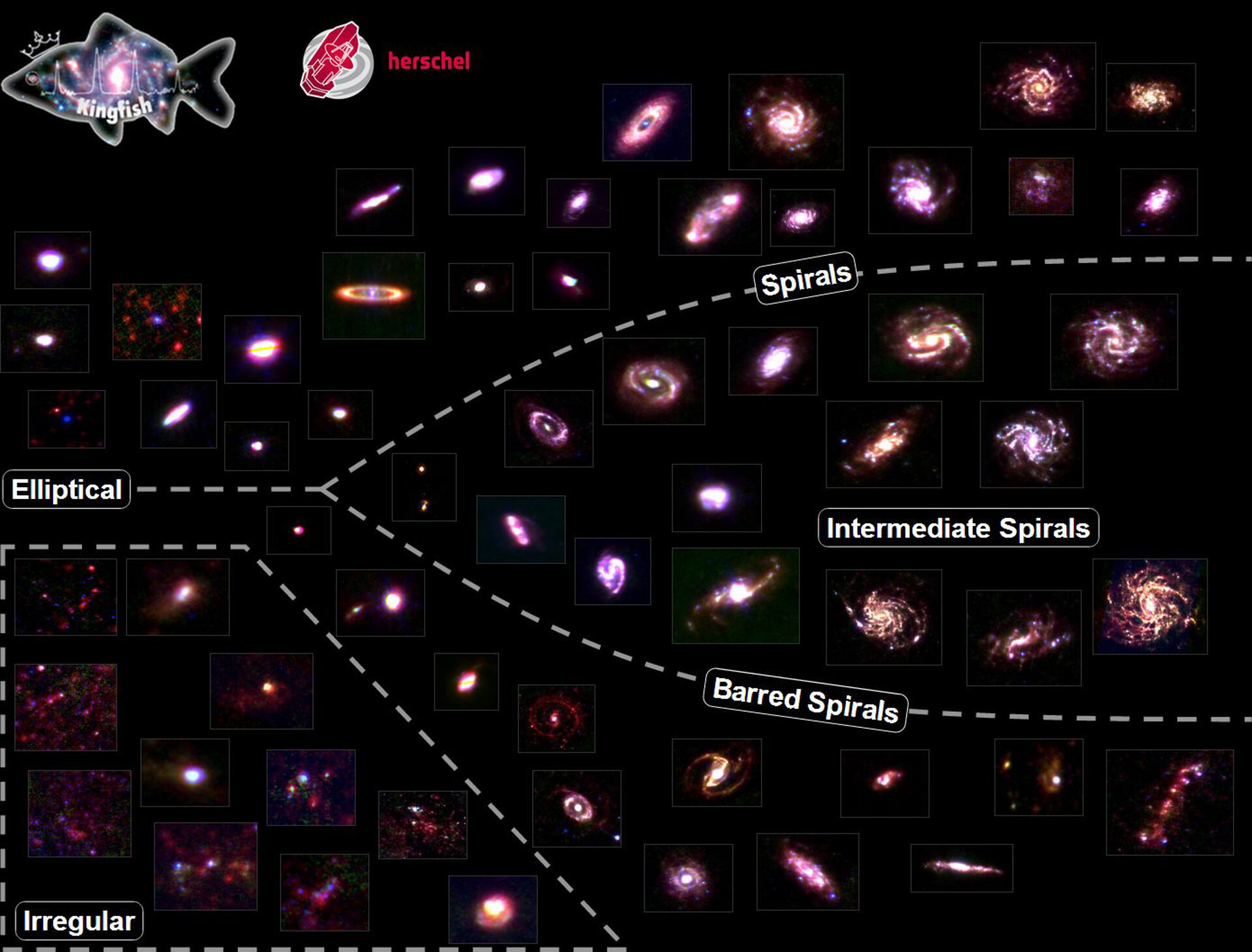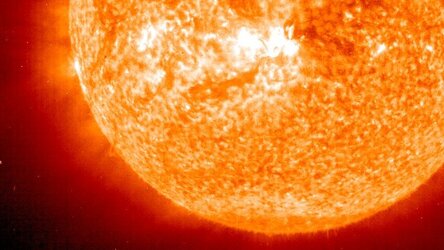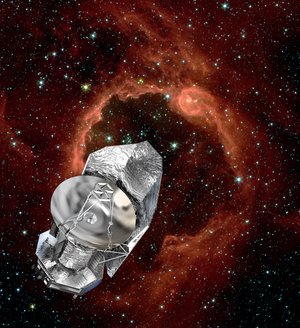Fine-tuning galaxies with Herschel and Spitzer
Galaxies come in all shapes and sizes: from those with compact fuzzy bulges or central bars to galaxies with winding spiral arms. Astronomer Edwin Hubble classified these different breeds of galaxies by means of a diagram known as the Hubble Tuning Fork.
The tuning fork shape presents elliptical galaxies along the handle, and two different populations of spiral galaxies on the fork’s ‘prongs’ to differentiate between spiral galaxies with a central bar, and those without.
The diagram also describes the shape of the galaxies. Elliptical galaxies are positioned further along the handle towards the fork depending on how elongated they appear, while spiral galaxies are organised by how tightly wound their arms are.
Of course, there are always exceptions, and a separate class of ‘irregular’ galaxies conforms to neither group, perhaps as a result of a collision or merging event disrupting their shape.
In this interactive tuning fork diagram, 61 nearby galaxies studied by ESA’s Herschel and NASA’s Spitzer space telescopes are presented. The galaxies are located 10–100 million light-years from Earth and were surveyed as part of two programmes: the Key Insights on Nearby Galaxies: a Far-Infrared Survey with Herschel (Kingfish) and the Spitzer Infrared Nearby Galaxies Survey (Sings).
Rather than stars, the images show dust between them that is gently heated by hot young stars, visible only to heat-seeking infrared telescopes such as Herschel and Spitzer.
Each individual image is a three-color composite showing warm dust (blue) detected by Spitzer at 24 microns, and cooler dust traced by Herschel at 100 microns (green) and 250 microns (red).
By clicking on each of the galaxies, more information is provided about their classification, distance, size and location in the sky.
The galaxies were chosen to cover a wide range of characteristics to improve our understanding of the processes linking star formation to the local interstellar environment in the nearby Universe.
Access the Interactive Hubble Tuning Fork at: http://herschel.cf.ac.uk/kingfish
Image credits: C. North, M. Galametz & the Kingfish Team















 Germany
Germany
 Austria
Austria
 Belgium
Belgium
 Denmark
Denmark
 Spain
Spain
 Estonia
Estonia
 Finland
Finland
 France
France
 Greece
Greece
 Hungary
Hungary
 Ireland
Ireland
 Italy
Italy
 Luxembourg
Luxembourg
 Norway
Norway
 The Netherlands
The Netherlands
 Poland
Poland
 Portugal
Portugal
 Czechia
Czechia
 Romania
Romania
 United Kingdom
United Kingdom
 Slovenia
Slovenia
 Sweden
Sweden
 Switzerland
Switzerland




























